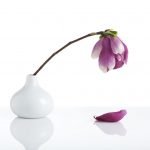Wrist Extension Injury: Manipulation Pearls
Nick Buratovich, NMD
Orthopedics
A wrist extension injury is one of the most common wrist injuries, and usually results from a fall on an outstretched hand, also known as a FOOSH injury.1 This can result from a simple fall in the home or workplace, or from an athletic circumstance, such as skateboarding, rollerblading, snowboarding, skiing, or playing volleyball. In can also result from physical activities that involve wrist extension, eg, doing yoga, lifting weights, doing push-ups, using a walker or a cane, or simply pushing oneself up from a chair.
The History
In taking the history of your patient, it is important to find out if the symptoms are a result of an isolated or incidental event, episode, or activity of daily living, or whether they are related to a repeated or sustained activity, either work- or leisure-related. What are palliative and aggravating factors? Is there an energetic or psychological overlay involving the upper extremities, specifically the wrist? Most importantly, are the patient’s presenting symptoms related to a trauma or a fall?
If the symptoms are a result of a trauma or fall, then the mechanism of injury must be determined. Questions to ask should include: What was the angle of impact? Was the wrist in a neutral position, or flexed or extended, or radial- or ulnar-deviated? The most common position is usually one of extension.
What was the force or height of the fall? Was speed involved in any contact? Or, is it a result of a throwing injury? In addition to a wrist injury, there may also be involvement of the elbow, shoulder, scapula, or chest wall. If the injury involves a fracture, ligament rupture, or nerve damage, it is beyond the scope of this article. The most common wrist fractures are Colles fracture and Smith’s fracture of the distal radius. A scaphoid fracture has an inherent risk of avascular necrosis. There may be significant nerve or ligament damage as well. To help with the diagnosis when trauma is involved, imaging is important. A PA (posterior-anterior) view provides information about bony damage, and a lateral view provides information about carpal ligament instability.2
The Physical Exam
When conducting your physical examination, it is important to palpate the distal radius and ulna, as well as the 8 carpal bones and metacarpals. The proximal carpal row includes – from a radial to ulnar direction – the scaphoid (navicular), lunate, triquetrum, and pisiform. This row has more independent motion than the distal row, and is therefore is more susceptible to injury. The distal carpal row includes – from a radial to ulnar direction – the trapezium, trapezoid, capitates, and hamate. This row has less independent motion and moves more like a block.
The normal ranges of motion are: Flexion (60-80 degrees), Extension (60-70 degrees), Radial Deviation (20 degrees), and Ulnar Deviation (30 degrees). It is also important to evaluate any swelling, sensitivity to palpation, grip strength, and the presence of a click, snap, crepitus or clunk.3 To further evaluate the impact of the injury on the patient’s life, it is important to ask the patient what is being done differently (demonstrating functional deficiency) to accommodate the pain in their activities of daily living.
In an extension-type injury, there is typically a distal forearm and carpal displacement pattern that can be corrected with manipulation. There are other interventions as well. Prevention – as in mindful activity, awareness in movement, and protective gear – is a good start. A patient may participate in rehabilitative exercises to increase circulation, support healing, maximize movement, and improve function. Stability can be provided through taping, and a compression sleeve or brace may be helpful. To decrease pain, inflammation, and any disability, the modalities of physiotherapy, hydrotherapy, acupuncture, topical or oral medications, and injection therapies (eg, prolotherapy, platelet-rich plasma, or stem cell therapy) can be used along with mind/body interventions if appropriate.
Treatment
The typical wrist/carpal displacement pattern in an extension injury is that the scaphoid goes posterior and medial, the triquetrum goes posterior and lateral, the lunate goes anterior in extension and posterior in flexion (from a point of perspective in anatomical position), the thumb (trapezium) goes lateral, the radius goes lateral and the ulna goes medial, and the proximal row of carpals goes superior.4
The manipulative correction may be performed with the patient supine, seated, or standing, and is done in a protocol pattern of correction.
- Scaphoid: There is a tissue pull from the capitate thumb-ward onto the scaphoid, which creates ulnar deviation. Traction and compression are applied while the doctor places the wrist in extension and provides a thrust.
- Triquetrum: There is a tissue pull from the capitate thumb-ward onto the triquetrum, which creates radial deviation. Traction and compression are applied while the doctor places the wrist in extension and provides a thrust.
- Lunate: The index and middle fingers contact the palmar aspect of the lunate, and the thenar eminences contact the dorsal surface of the lunate. The wrist is placed in flexion so that the palm faces the patient. The doctor tractions the arm so it is straight, and thrusts towards him/herself.
- Radius/Ulna: One hand compresses the radius and ulna in the distal forearm while the other hand provides a distractive force to the proximal row of carpals.
- Proximal row of carpals: The thenar eminences are placed over the proximal row of carpals and produce a compressive carpal spread over the dorsal surface of the carpals.
- Thumb (trapezium): One hand grabs around the thumb so the doctor’s thumb is on the trapezium. The other hand grabs the wrist, and that thumb covers the other thumb. The first hand-contact provides a “can opener” motion while the second hand provides a thrust to the thumb.
In all contacts there is a compression force applied with your hands, thumbs, or fingers. You may initiate contact with a generalized compressive contact/mobilization of the carpals into flexion, extension, radial or ulnar deviation, or circumduction. These movements can be done before the manipulative correction, and may produce articular movement, crepitus, clicking, snapping, or clunking.
During the mobilization and manipulative correction, you are stimulating the mechanoreceptors of the joints (types 1-3), and by this stimulation with controlled motion you are downregulating, or inhibiting, the nociceptors (type 4). This will contribute to pain suppression in the pathways to the spinal cord and brain.5
Remember to apply effective patient-centered care by following the naturopathic principles:
- First do no harm: With manipulation, do not violate the anatomical boundary
- Find and treat the cause: Look at the indicators for wrist dysfunction and pain, and complete a thorough history and physical examination
- Treat the whole person: Treat associated asymmetry patterns and other associated joints
- Doctor as teacher/prevention: Instruct the patient in proper positioning and posture, including exercise, rest, and diet
- Stimulate the Vis: Doing all these things will stimulate the Vis medicatrix naturae
References:
- Forman TA, Korman SK, Rose NE. A Clinical approach to diagnosing wrist pain. Am Fam Physician. 2005;72(9):1753-1758.
- Goldfarb CA, Yin Y, Gilula LA, et al. Wrist fractures: what the clinician wants to know. Radiology. 2001;219(1):11-28.
- Daniels JM, Zook EG, Lynch JM. Hand and wrist injuries: Part 1. Non-emergent evaluation. Am Fam Physician. 2004;69(8):1941-1948.
- Charrette MN. Charrette Adjusting Protocols: How I Adjust Common Extremity Subluxation Patterns. (Self-published); 2002.
- Dvorak J, Dvorak V. Manual Medicine. New York, NY: Thieme Medical Publishers, Inc; 1990: 35-45.
Image Copyright: <a href=’https://www.123rf.com/profile_dolgachov’>dolgachov / 123RF Stock Photo</a>
 Nick Buratovich, NMD, is a professor of naturopathic medicine and Department Chair of Physical Medicine at the Southwest College of Naturopathic Medicine and Health Sciences (SCNM) in Tempe, AZ. Dr Buratovich graduated from NCNM in 1983. He is a founding faculty member at SCNM (1993) and also has served as the secretary of the Board of Trustees. He maintains a clinical rotation at the Southwest Naturopathic Medical Center’s Pain Relief Center, as well as a private practice in naturopathic family medicine with an emphasis in musculoskeletal disorders and pain management.
Nick Buratovich, NMD, is a professor of naturopathic medicine and Department Chair of Physical Medicine at the Southwest College of Naturopathic Medicine and Health Sciences (SCNM) in Tempe, AZ. Dr Buratovich graduated from NCNM in 1983. He is a founding faculty member at SCNM (1993) and also has served as the secretary of the Board of Trustees. He maintains a clinical rotation at the Southwest Naturopathic Medical Center’s Pain Relief Center, as well as a private practice in naturopathic family medicine with an emphasis in musculoskeletal disorders and pain management.









